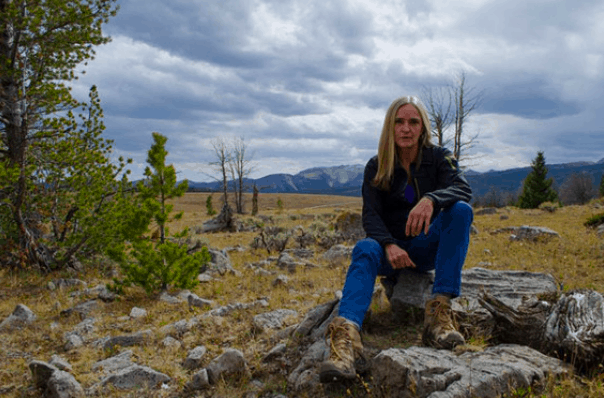When the U.S. Forest Service logs “dead and dying” trees impacted by mountain pine beetles as part of a ‘salvage’ timber sale, might they also literally be cutting down the toughest and strongest trees that contain the best genetics?
New research from one of the nation’s leading entomologists lends some credence to that theory.
I was first made aware of this concept back around 2005, when we had just spent a day in the woods with a number of University of Montana scientists and reachers from the College of Forestry & Conservation, including Dr. Diana Six.
We were taking a look at the Bitterroot National Forest’s proposed Middle East Fork Healthy Forest Restoration Act Timber Sale. While conservation groups like WildWest Institute and Friends of the Bitterroot were generally supportive of about 2,000 acres of ‘thinning’ and ‘fuel reduction’ work immediately around a community of homes and cabins up the East Fork of the Bitterroot River, we strongly objected to the fact that the Forest Service and logging industry wanted to cut down nearly 2,500 acres of previously unlogged, native forests – including some Douglas fir that measured 3 feet in diameter – far from homes under the guise of “restoration” and “fuel reduction.”
In fact, much of the 2,500 acres of unlogged, native forests were previously considered old-growth habitat by the Forest Service until 2005 – when the Forest Service resurveyed the stands and determined they weren’t old-growth forest habitat after all supposedly because of the number of dead and dying trees, especially huge Douglas fir, which were impacted by bark beetles.
One thing back on that field tour in 2005 that Dr. Diana Six really got us thinking about was the genetics of trees that were dying as a result of bark beetles, but not yet dead. Of course, all living things are dying – including you and me – but what if the Forest Service was actually cutting down dying trees that might rebound and successfully fight off the bark beetle attack? Might these trees, if the Forest Service didn’t let the timber industry cut them down on our public lands, actually have possessed in their DNA the best genetics to fight off future bark beetle epidemics?
On September 11, 2007 I took some reporters to the Bitterroot National Forest for a tour of what the Bitterroot National Forest did under the guise of “community fire protection” and “restoring fire adapted ecosystems” over four miles away from the nearest home in the area. Here’s what we found.
Now, while I realize that mountain pine beetles (the subject of Dr. Six’s latest research) are different than Douglas-fir beetle; it seems as if the same general concept applies to all trees that someone fend off beetle epidemics.
Below is the press release from the University of Montana.
MISSOULA – A University of Montana researcher has discovered that mountain pine beetles may avoid certain trees within a population they normally would kill due to genetics in the trees.
UM Professor Diana Six made the discovery after studying mature whitebark and lodgepole trees that were the age and size that mountain pine beetle prefer, but had somehow escaped attack during the recent outbreak.
After DNA screening, survivor trees all contained a similar genetic makeup that was distinctly different from the general population that were mostly susceptible to the beetle.
“Our findings suggest that survivorship is genetically based and, thus, heritable,” Six said, “which is what gives us hope.”
In western North America, whitebark pine, a high elevation keystone species recommended for listing as an endangered species, and lodgepole pine, a widespread ecologically and economically important tree, have experienced extensive mortality in recent climate-driven outbreaks of the mountain pine beetle.
“Our results suggest that surviving trees possess a wealth of information that can be used to inform our understanding of the genetic and phenotypic bases for resistance and to develop management approaches that support forest adaptation,” Six said.
The study was published July 23 in the journal Frontiers in Plant Science and is available online right here.

As this blog’s token geneticist, I know that there is genetic differentiation for everything in forest trees (and other organisms). I think what is noteworthy in this paper compared to what you wrote is
“These results indicate the presence of genetically based resistance in both pine species and that trees with resistant genotypes are not selected for attack.” The title of the post also says “untouched.”
If they are not attacked then they would not be found in the pool of “dead and dying” for salvage. You could argue that if surrounding trees are removed, they are less likely to die from a fire burning nearby dead trees, or get skinned up from falling nearby dead trees. Perhaps this would argue for salvage efforts anywhere there are remaining untouched trees? Just kidding.